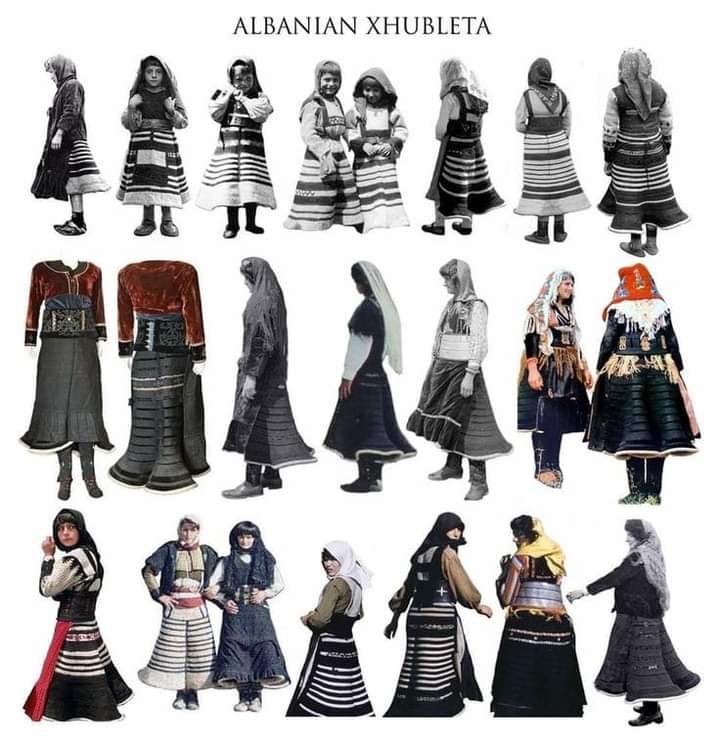It’s been years that we expect the news and can finally share it!
Albanian Xhubleta becomes part of UNESCO’s Intangible Cultural Heritage and that means it has an outstanding universal value and meets at least one out of ten selection criteria given by the convention.
But what’s so special about this piece of Albanian traditional clothing?
Xhubleta is a handcrafted garment worn by highland women and girls in Northern Albania, characterised by its undulating bell form. Predominantly black with colourful embroidered motifs, the crafting process entails preparing the shajak (woven felt), cutting, sewing and embroidering symbolic figures. The 4,000-year-old tradition of producing traditional jublet with all its parameters stopped in the 50s or 60s. It took 6 to 8 months to produce a jublet.

Xhubleta was once used in everyday life from the age of puberty, indicating the wearer’s social and economic status. However, its use and production has been decreasing over the past decades due to socio-political and economic reasons. The new policies set by the socialist system in the 1960s altered traditional cultural patterns, bringing changes to the daily lives of the mountain communities and the use and production of Xhubleta. As women had to work in the agricultural socialist cooperatives, Xhubleta was no longer practical for everyday life.

Furthermore, state collectivization led to a lack of raw materials for its production. Today, few women possess the knowledge of the entire process, and traditional family-based transmission is rare. Nevertheless, the garment has maintained its social and spiritual significance and is still considered an integral part of highland identity.

This decision paves the way for the process of acceptance into Unesco of other national properties which also have an urgent need to be considered equally important and to be protected by the convention.


